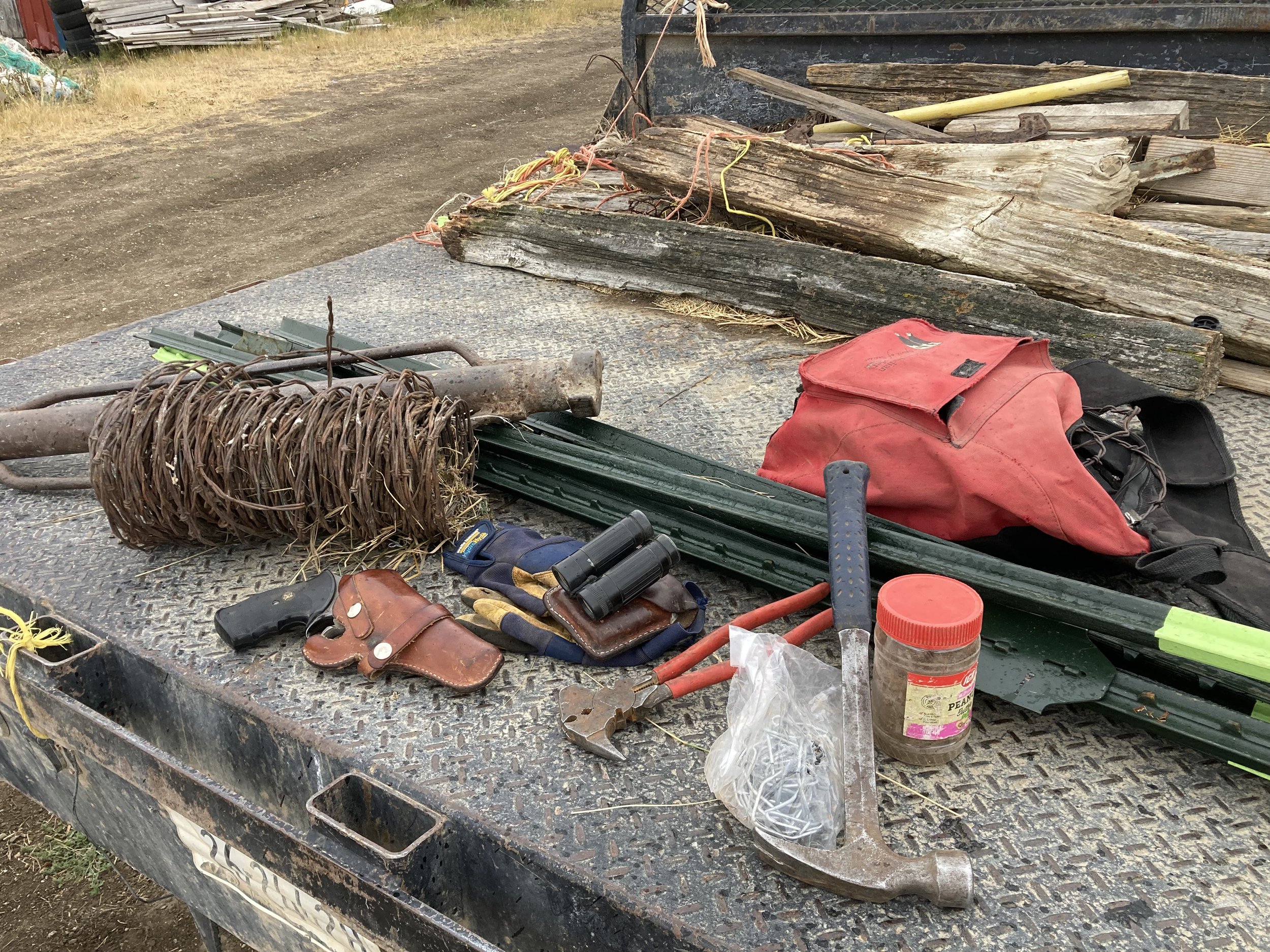A Neighborhood Watch
An informal Neighborhood Watch has formed along the Dry Fork of the Marias River, where my cows spend most of the summer.
This Neighborhood Watch doesn’t work to protect children or discourage crime. This one reports grizzly sightings by five of us who graze cattle in the bottoms.
A couple of weeks ago, a farmer neighbor who has spring wheat just across the fence from my cattle texted to say my cows were in his crop.
Immediately, I was on my way.
He called – unusual in this area of poor cell service and busy hands.
“Watch out when you walk out there. Bears are all over,” he cautioned.
I appreciated his warning and said I was bringing a horse and a dog. Both might give me a little advantage in the tall cover. Besides, I tend to talk to my dog. Maybe the bears would listen, too.
The grass in that pasture is tall and green. The fence was flat on the ground with two posts broken completely off, as if a tank ran over it.
I brought the cows back and fixed the fence, wondering why the cows would leave that lush grass for crunchy, unpalatable, mature wheat.
A couple of days later, a second neighbor texted to say she saw a young grizzly running among a herd of cattle just east of mine. She shot a rifle into the air. The bear ran west through my cattle and the next herd.
I now had a pretty good idea why my cows would leave that lush bottom pasture.
The state grizzly bear specialist shared this information with our little Neighborhood Watch, too.
He assured us that the bear would return. It wasn’t a matter of if, but when.
The next day, I needed to fix more fence so I strapped binoculars and a .41 pistol on my hip, picked up a few t-posts and a post-pounder and slung a pack full of staples, clips, fencing pliers, a hammer, wire and a water bottle on my back.
If I spotted a grizzly, my plan was to run. I know I’m fast. After all, I earned a participation ribbon for my seventh-grade track and field day.
My backup plan was to throw the 20-pound post pounder at the bear then empty my pistol in his mouth. No doubt by the time I heaved the post pounder, I would have a clear shot of his gaping jaws.
I didn’t see a bear that day, but I splashed through the creek so I still had fun. And I didn’t need to go to the gym that evening. I had already worked my shoulders, arms and abs.
The next day, the bear specialist texted to say the bear that ran through the calves had yet to return, but the agency chose to euthanize a different young bear who had ransacked several farmsteads because he had not responded to efforts to discourage him. That bear had been wreaking havoc about a half mile from my cattle.
Three days later, my neighbor who has cattle on the western edge of the creek bottoms said he hazed the bear when he spotted it meandering through his cattle.
Generally, I’m a live and let live type of person. A significant component of that mentality is having the autonomy to protect my livestock when and where I need to.
Vigilante justice has a history of getting out of hand, but in this rural area where agency personnel cannot physically get to an unfolding crisis, a successful live and let live strategy requires using good judgement and communicating among our informal Neighborhood Watch.
It works when common sense prevails – along with junior high participation ribbons.
